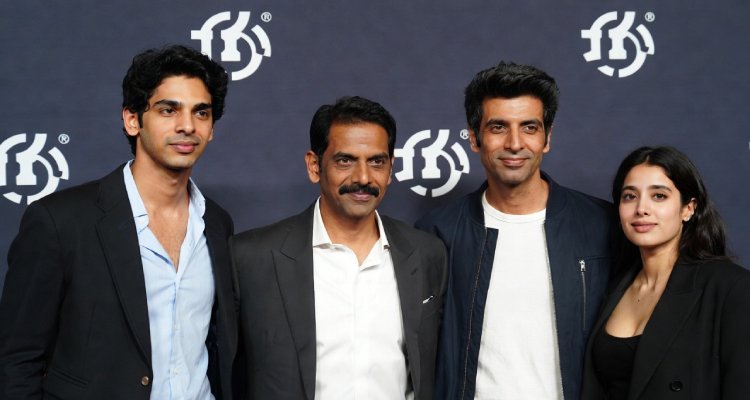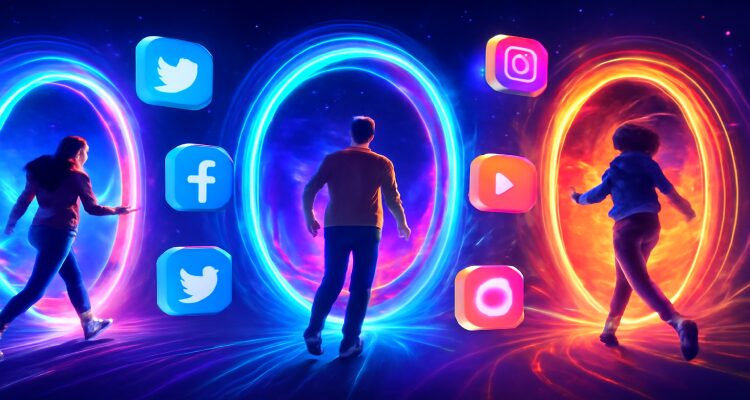Beyond the Screen: Immersive Worlds and Interactive Fame
From VR concerts to digital avatars, immersive worlds are reshaping entertainment and redefining fame in the age of interactive storytelling.
Introduction: A New Dimension of Fame
Once upon a time, stardom meant flashing cameras, red carpets, and global fan clubs. Today, fame is no longer confined to movie theaters or television screens. It exists in virtual arenas, interactive game universes, and social spaces that blend the physical with the digital. From metaverse concerts to interactive film experiences, entertainment has moved beyond the screen—ushering in a world where fans are not just spectators but co-creators.
Context & Background: The Shift to Immersion
The roots of immersive entertainment can be traced back to early experiments with 3D films and virtual reality arcades in the 1990s. Yet, it is only in the past decade—with advancements in gaming engines, affordable VR headsets, and cloud technology—that immersive experiences have begun to enter the mainstream.
Platforms like Fortnite, Roblox, and VRChat have transformed into global stages where music artists launch albums, brands showcase fashion collections, and digital influencers attract millions of followers. This is not simply a technological trend—it’s a cultural shift. Fame is evolving from a passive, screen-based spectacle into an interactive relationship between creators and audiences.
Main Developments: Fame in the Age of Immersion
Immersive worlds are rewriting the rules of entertainment. Some key developments include:
- Virtual Concerts and Events: Travis Scott’s 2020 Fortnite concert drew over 27 million viewers—without a single stadium seat. Today, artists like Ariana Grande and The Weeknd are experimenting with fully digital performances that transcend physical limitations.
- Interactive Storytelling: Streaming platforms are testing choose-your-own-adventure formats, allowing viewers to shape plotlines in real time. Netflix’s Black Mirror: Bandersnatch proved audiences are hungry for more than passive viewing.
- Rise of Digital Avatars: Virtual influencers such as Lil Miquela or Imma command millions of followers on Instagram, brand partnerships, and even fan clubs—blurring the line between celebrity and simulation.
- Hybrid Fame: Celebrities are creating metaverse personas to extend their reach. From Snoop Dogg’s presence in The Sandbox to Justin Bieber’s holographic concerts, the future of stardom is increasingly hybrid.
Expert Insight & Public Reaction
Industry experts see this as a paradigm shift. Dr. Anita Reynolds, a digital culture analyst, explains:
“Immersive fame is not about replacing traditional celebrities but expanding the definition of celebrity. The digital world allows for new forms of creativity, accessibility, and interaction.”
Public sentiment echoes this fascination. Fans often describe immersive concerts or avatar-led performances as “more personal” and “limitless.” However, critics warn of potential downsides—ranging from digital addiction to questions about authenticity when a virtual influencer becomes more popular than a human one.
Impact & Implications: The Road Ahead
The impact of immersive worlds stretches far beyond entertainment:
- For Creators: Artists gain new revenue streams, bypassing physical limitations like ticket sales and venue sizes.
- For Audiences: Fans gain agency—participating in worlds where they can dance on stage with their favorite singer or influence a movie ending.
- For the Industry: Media companies are rethinking business models, with investments flowing into VR studios, AR advertising, and AI-driven content creation.
- For Society: Questions of digital identity, authenticity, and ownership of virtual experiences are emerging, sparking debates on ethics and regulation.
As immersive technologies evolve, fame may no longer be measured by box office hits or TV ratings but by engagement inside virtual spaces.
Conclusion: The Future of Stardom
We are witnessing a cultural redefinition of celebrity. Fame is no longer a one-way mirror where audiences simply admire from afar. Instead, it is becoming a dynamic, participatory experience where fans, avatars, and creators shape each other’s stories.
In this era of immersive worlds, the question is not whether fame can exist beyond the screen—it already does. The real question is: How far will we go into these digital dimensions of stardom?
Disclaimer : This article is for informational and educational purposes only. It does not promote or endorse specific platforms, brands, or technologies mentioned.











